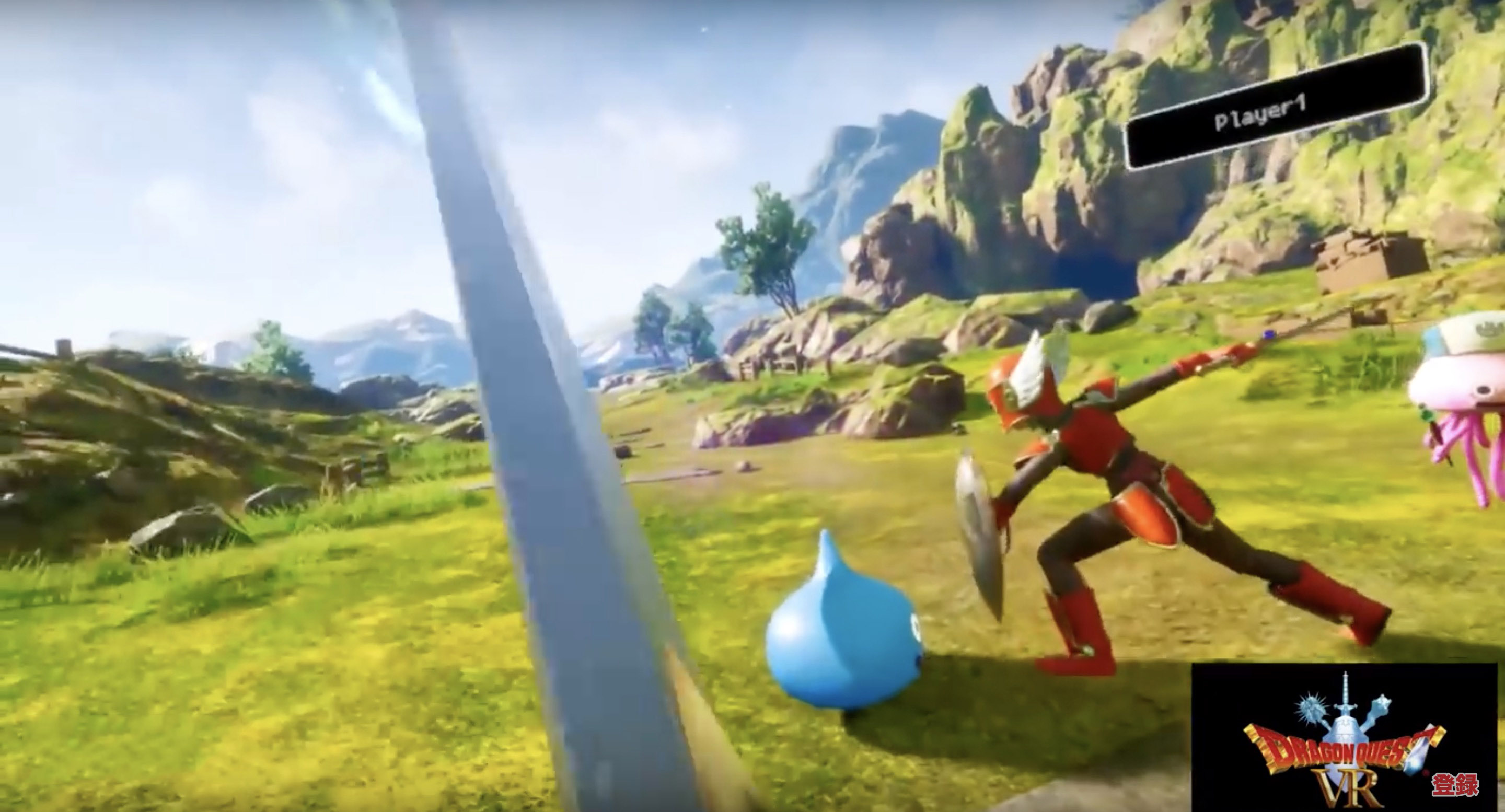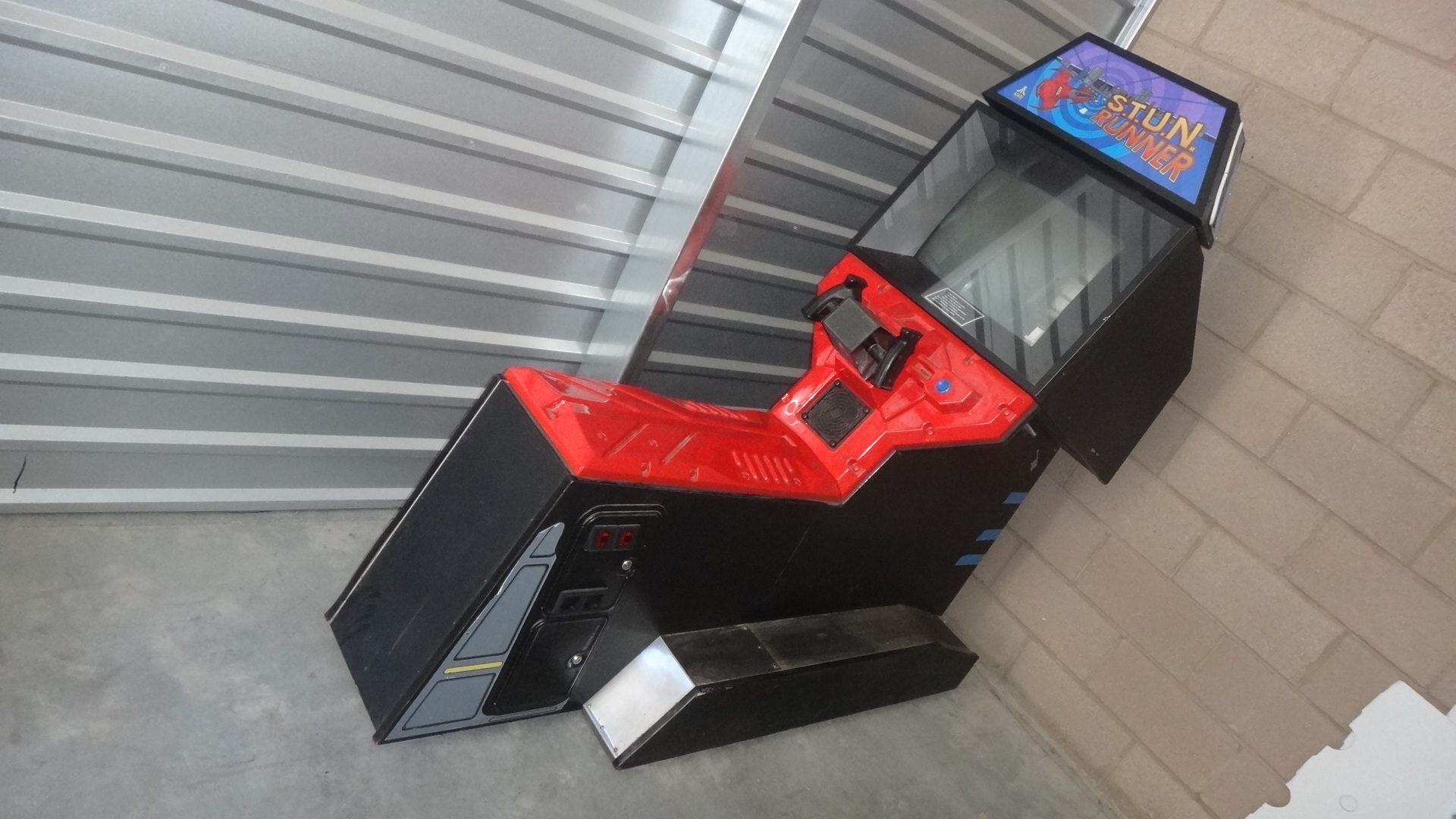I enjoy both virtual reality and Mario Kart games, so I’ve wanted to play Mario Kart VR ever since it was announced. Unfortunately, like 99.994 percent of the population, I would have to physically travel to a different city just to play it: One year after its release, Bandai Namco and Nintendo have only made it available in Tokyo and London.
If you’ve been following the news lately, you know that the same thing is happening with an increasing number of hit franchises. The latest Star Wars, Terminator, and Dragon Quest games are “location-based” VR releases that can’t be played at home, and cost around $1 per minute to “experience” at specially equipped “VR zones.”
As a student of game history (and occasional historian), I see parallels here to gaming’s earliest days, when players had to visit arcades to try the latest and greatest titles. But what really concerns me is that some pioneering and potentially important VR games will be lost to history. Big VR developers are hoping to make money building custom solutions for specific rooms and small groups of people, rather than betting on universal VR games that everyone can enjoy at home.

Above: Square Enix’s Dragon Quest VR is exclusively available in Japan as a pricey location-based VR experience.
Thanks largely to emulator developers and game preservationists, today’s gamers have access to nearly every arcade game ever sold — and even some that were never released. Despite having been abandoned by their publishers, classic game ROM chips were painstakingly transferred into data files, and coders have found ways to make computers emulate even obscure processors and displays. Because of this largely unpaid labor, even a $35 Raspberry Pi can run the first 20 years of arcade games today at full speed.
By comparison with TV games, VR games exponentially increase emulation challenges. Beyond the game code, CPU, GPU, and audio hardware, multiple cutting-edge display and control peripherals need to be coordinated: twin high-refresh displays, motion controls, and motion sensors for sure, with the possibility of a wireless network, cameras, individually tracked objects, individual wireless headset packs, and haptic feedback devices. That doesn’t include any monitoring screens, computers, and hardware the location is using to coordinate multiple players.
If you already own a VR headset and VR-capable computer or console, you probably already have most of the hardware you’d need to play a location-based VR game. But you certainly don’t have all of it, and there’s also no way to make your popular PlayStation 4 VR hardware run the PC-based Dragon Quest VR experience natively. Realistically, Square Enix would need to completely re-code it for the different platform, and you’d then need to add whatever hardware you’re missing.

Above: Atari’s arcade game S.T.U.N. Runner used a unique steering wheel with pivoting weapon controls, which proved tricky to emulate at home.
Emulator developers have come up with workarounds for arcade challenges like this in the past. As players of Atari’s S.T.U.N. Runner, Konami’s Silent Scope, and Sega’s Holosseum can attest, however, emulated games don’t necessarily feel or look the same without their original controllers or unique displays. Some of the magic gets lost.
The good news is that many of today’s location-based VR games run on PCs, so it’s entirely possible that the basic software and hardware parts of emulation will be easy. Just like arcade games, location-based games will probably get dumped into downloadable binaries eventually, then become playable on any PC with superior hardware. VR-capable PCs and headsets will get cheaper and more common over time.
But a “dump and emulate” solution will still leave players to scrounge for custom VR accessories, and won’t fully compensate VR software developers for their work. Knowing that this (or the loss of these games to history) will be the likely outcome, I would hope that today’s location-based VR developers focus less on copy-protecting their games — something that hackers always defeat in the long run — and more on what will happen to the games once these VR locations inevitably close.

Above: Star Wars: Secrets of the Empire is a location-based VR experience.
A good solution would be for today’s location-based VR game developers to commit to porting their titles for home play. This would discourage if not eliminate the need for emulation, and enable the developers to further monetize their games after their location runs were done, which is absolutely certain to happen at some point.
Arcades had their day, but as consoles and later mobile devices increased in power and ubiquity, they eliminated the need to go out to a special place for a similar experience. The same thing will happen with VR, and in my view, that just makes sense. It strikes me as crazy and ironic that I’d have to travel to another city just to play a virtual reality game, particularly since millions of people (including me!) already have VR hardware in their homes. VR is supposed to remove the need to travel, not to require it.
If fully monetizing their creations isn’t incentive enough, game developers should consider historic precedent, as well. It would be a shame for the budding VR format’s software pioneers to be forgotten, much as early video game pioneers became obscure once their titles faded from public view. Arcades were once an important part of their stories, but as Nintendo, Sony, and Microsoft will attest, the key to winning a place in most gamers’ hearts was having a place in their homes.

